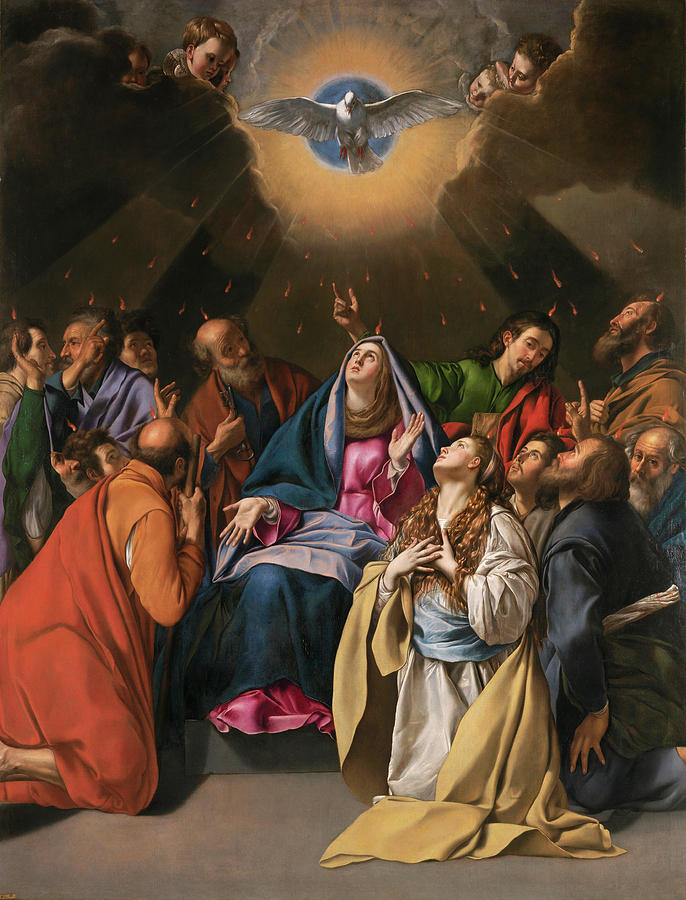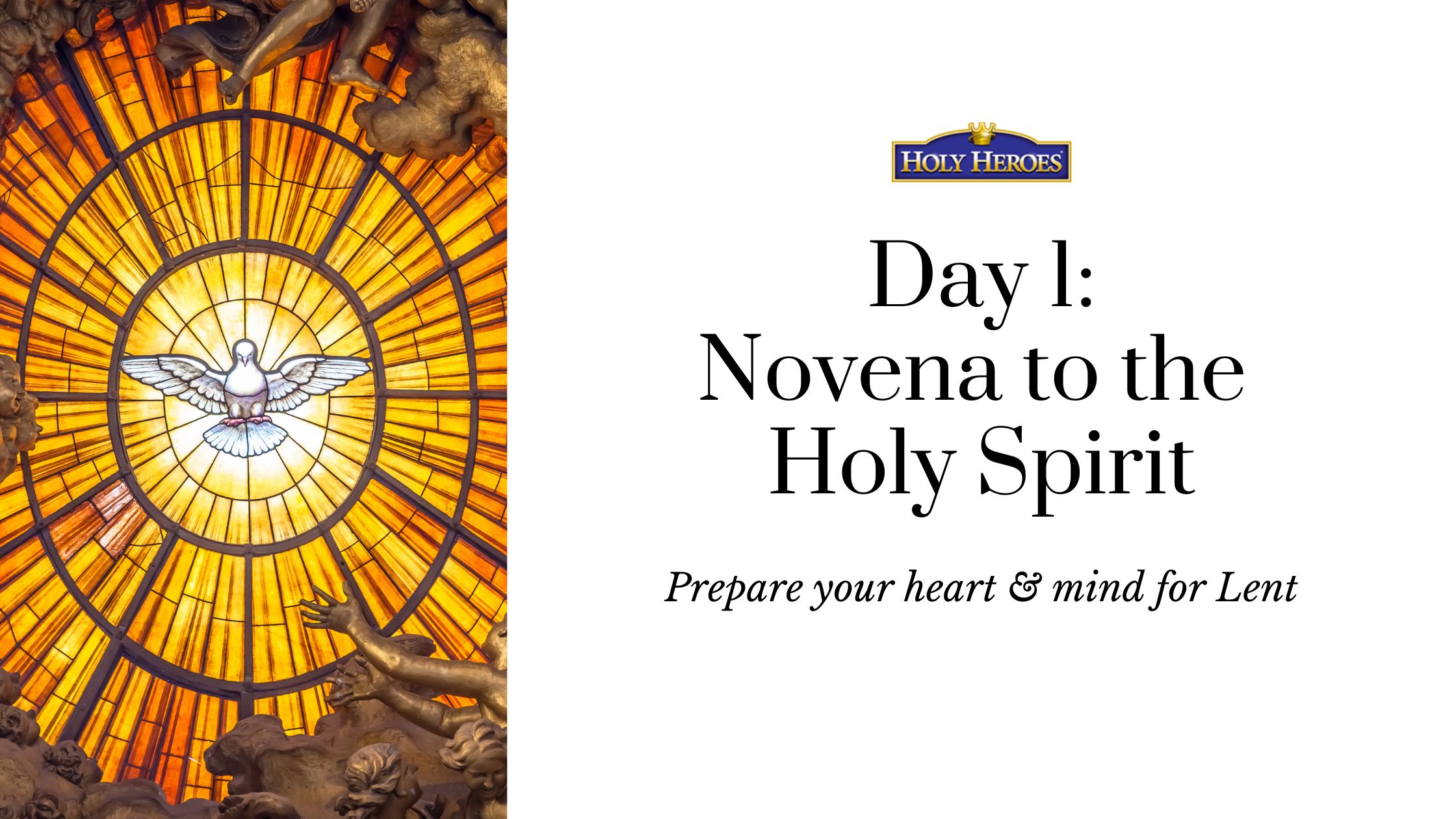This year, my eighteen-year-old son, Trey, and I decided to do something a little different for Lent. We resolved to “give up” a couple of hours a week to go back to the basics and try to see the beauty and grandeur of our Catholic Faith with fresh eyes.
We thought it might be a good idea to enlist the help of a trustworthy guide. Someone who knows Catholic history, theology, the Catechism, and the Bible like the back of his hand. Someone who has a contagious love of Catholicism and who can make the Faith come alive.
Well, Trey and I found just the right person – and you may already be familiar with him. He’s the delightful theologian and author Jeff Cavins, and the guided tour he is taking us on is his ten-CD set called Catholicism 101: Essentials for the Journey. [You can get the whole 10-CD set here–great for thoughtful discussions in the car–or watch it at home in video 10-DVD version here. We have both versions on sale now for Lent.]
We just finished the first two lessons, and here are just a few of the things we’re loving about Catholicism 101 so far.

Gleanings from Lesson One: “Conversion: From Chaos to Covenant”
Right from the outset, Jeff is clear about what the goal of the series is: conversion. Deep, ongoing, lasting conversion.
Perfect. Isn’t that pretty much the goal of Lent?
And in what direction is our ongoing conversion pointing us?
Upward, Cavins says. To the Trinity.
“The three persons of the Trinity are a dynamo of love – and that’s what we’re called to be brought up into,” Cavins tells us. “It is the source of all joy, perfect beauty, perfect mercy, perfect justice. We’re called to be converted… to be raised up into the life of the Trinity and to enjoy the life of the Trinity forever and ever. But getting there can be a battle. There can be all sorts of things in the way.”
Cavins then invokes the story of David slaying Goliath with one smooth stone, and he suggests that we think of the ten parts ofCatholicism 101 as “ten smooth stones” – or put another way, ten spiritual weapons or tools that will help us remove the stumbling blocks that are holding us back from conversion and from the joy that conforming ourselves more perfectly to Christ brings.
Trey and I like the idea of having ten smooth stones as weapons we can use against the devil and his minions during Lent!
This is not self-help. This is God-help.
We also like it that Jeff is clear about what this series is NOT: it is not yet another form of self-help.
“There are so many self-help books and some of them offer some good ideas,” Cavins says. “But the one thing they lack is the power to change. We don’t have the power to bring about what the book promises.
“As you strive to become the man or woman God has called you to be, it is His power working in you through these ten stones. We cannot do this on our own. At the same time, God can’t bring about conversion unless WE do something. So there’s the coming together of God and us to bring change.”
Catholicism is all about family.
Cavins stresses that real conversion – deep, ongoing, lasting conversion — can only take place in the context of a
“For ongoing conversion, the family is necessary,” Cavins says. “It’s not something we do alone. We do it together. We need each other for conversion. ‘As iron sharpens iron, so one brother sharpens the other.’”
He continues: “The Church is not a political organization or a social organization. It is a family… a family of God. And it is through the family of God that we are changed in the same way our children are changed in the context of a family.
“The key thing to note is that growth in the Faith – conversion – is an ongoing process, not a one-time experience. In that sense, it’s like another human experience – that of courtship, engagement, and marriage.”

Gleanings from Lesson Two: “The Word of God: A Father Speaks to His Children”
In Lesson Two, Jeff Cavins describes how overwhelming Catholicism can be for a child. It begins when the child walks into a Catholic church and there is so much to take in visually:
The statues. The votive candles. The stained glass windows. The Stations of the Cross. The
Then there is the disjointed way the Faith is sometimes taught to our children. Although it is always well-meaning, teaching the Faith in piecemeal fashion can again be overwhelming, confusing, and ultimately off-putting.
Cavins cites a quote by Catholic writer and theologian Frank Sheed to illustrate his point: “After twelve years of parochial education, our children end up with a heap of Catholicism.”
The problem with giving our kids this “great, big pile of Catholicism,” Cavins says, is that our kids “don’t know how to organize it, to tap into it for daily living.”
As a result, too many Catholic kids going off to college aren’t given a good reason to stay Catholic. The only reason many parents give them is: “That pile is paid for and you are Catholic.”
An antidote for what’s missing: CONTEXT
Cavins next describes another situation that may sound familiar: “Mom signs little Johnny up for a class on the sacraments. And Johnny says, ‘That’s boring.’ And you know what? Johnny is right. Why? Because there’s no context given in too many classes or courses. How does it apply to me? We do the same things as adults. What do we say about the Bible? ‘It’s boring. What does it have to do with me?’ We don’t understand the context.”
Using brief passages from the
A roadmap for reading and better understanding the Bible
In this part of the lesson, Cavins tells the funny story of well-intentioned people who go out and buy a bright, shiny new Bible — “Because the old one didn’t work.” [Hahaha.] They also purchase a
When we try to read the Bible alone like this, we are confronted by “all of these foreign names and places and ideas,” Cavins says. “How does a modern person get his arms around all of this?”
Cavins makes this promise: “We will learn why the Bible is different than any other book. And we’ll learn how to read the Bible so that the narrative story makes sense in our lives.”
He then keeps his promise by proposing an ingenious method for reading and better understanding the Bible. What he recommends is reading the Bible for the storyline–not just straight-through. You can identify the books and chapters which lay out the plot of Salvation History without getting lost with the liturgical and ritual laws, songs, and other parts of the Bible which confound the “flow.” [NOTE: For the younger readers in your home, we have the Picture Bible here, a cartoon-style Bible which Venerable Fulton Sheen called “an excellent introduction for those who do not know the Bible and excellent review for those who do” which provides just this “storyline” approach. All our kids have just devoured this Bible. For adults: this Bible has Cavins’ reading plan–and more!–built in: here.]
The greatest story ever told
Toward the end of the CD, Cavins poses this question: Why did so many young girls go to see the movie Titanic over and over again when it first came out – some of them returning to see it six, seven, eight times. His answer: “Just for the chance to meet someone [like the character Jack]who loved them so much, he would die for them.”
“In the Bible, we have a better story. But if we don’t know how to read it and pass it on, and live it, and share it with our families, then they’re going to go out and look for a better story,” Cavins says. “I told my daughter, ‘If you ever find a better story than this, I want you to live it.’ God loves us so much that He came to earth, became one of us and died for us so that we could live with Him in perfect joy, perfect, love, perfect peace forever and ever. Hollywood can’t touch this!”
This is truly an inspiring – and inspired – series. And we’ve shared only a fraction of it here just to whet your appetite.
Next week, we’ll be sharing some of our favorite highlights from the next two lessons in Jeff Cavins’s remarkable series.
Stay tuned and may God bless you and your family during Lent.
Ken Davison created Glory Stories, which became a weekly radio series heard globally on the Ave Maria Satellite Radio Network and EWTN’s radio network, WEWN. In 2007, he and his wife, Kerri, founded Holy Heroes–and their children stepped in to help shortly thereafter to create the online “Adventures” for Advent, Lent, Spiritual Adoption, and Marian Consecration.




